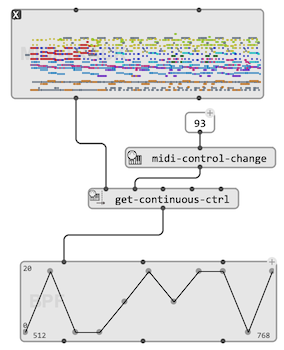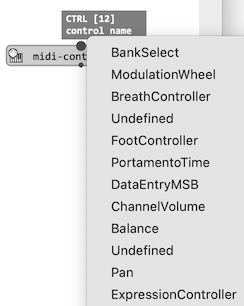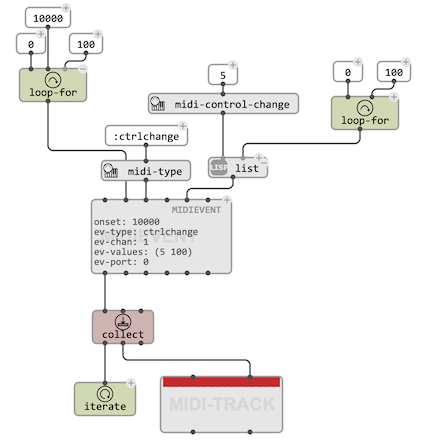OM# Documentation
MIDI Continuous Controllers
Continuous controllers are settings that can be sent to a MIDI synthesizer, usually through messages of type ControlChange. ControlChange messages apply to specific MIDI channels. The type of control as well as the setting value are given as message parameters (or “values”), both given in the range 0-127.
The “General MIDI” standard defines a set of controllers corresponding to control numbers (e.g. Volume, Panning, etc.). Some control numbers are left undefined and freely assignable.
The utility box
midi-control-changeallows retrieving the control number corresponding to standard General MIDI controllers.
The second value of the ControlChange message is the value set to the designated control (aslo in the range 0-127).
For specific message types requiring more precision, additional events are used for “fine control”.
Note:
PitchBendis a special kind of control, with its own type of MIDI message. Therefore the setting can be specified with more precision using the two value fields of the MIDI messages, offering a range of 0-16383 for a pitch deviation of ±2 semi-tones. Some OM# functions treatPitchBendas just another kind of continuous controller.
Sending Continuous Controllers
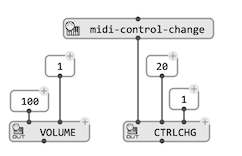
The function ctrlchg sends a Control Change message of specified type and value to a given MIDI channel on a given (optional) output port.
volumesends a value specifically targeted at control #7 (I.e. “Channel Volume”, according to “General MIDI” standard).
pitchwheelsends a pitch bend message (0-16383, with 8192 = no bend) to a given MIDI channel on a given (optional) output port.pitchbenddoes the same with a bvalue range of 0-127, and 64 = no bend.
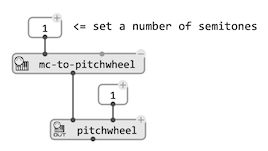
The
midi-resetfunctions sends a special controller (#121) which reset all controllers to their default.
Generating Continuous Controllers as MIDIEVENTS
To generate continuous controller messages as MIDIEVENTs, just initialize it with the corresponding type of event and control number. Use the onset to set a time and generate any control sequence.
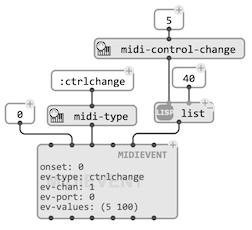
Example: Generation of
MIDIEVENTsfor a constinuous controller using a loop (100 events at intervals of 100ms).
Using BPF actions
BPF and other “time sequences” can be assigned actions to perform for each contained timed iteam during playback. It is therefore possible to the this action as a patch sending continuous controllers (or any kind of MIDI events).
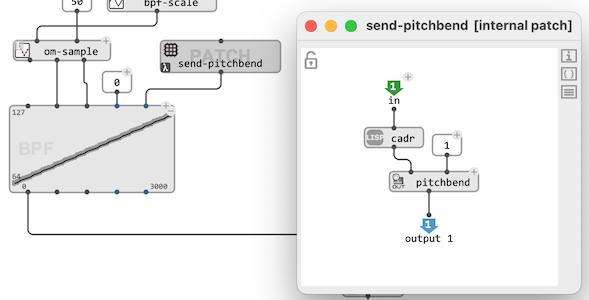
One of the default actions in the BPF editor is
midi-controller: this action atomatically sets the action to send a MIDI continuous controller, with a given control number and the values as read in the BPF.
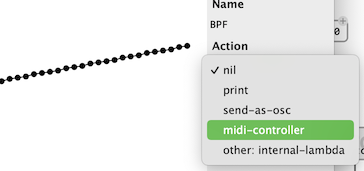 →
→ 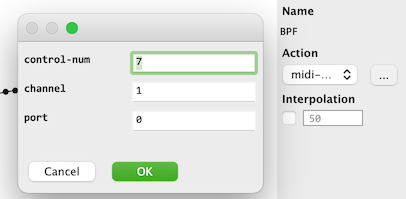
Extracting Continuous Controllers
The function get-continuous-ctrl collects the events of a given continuous control type on specified tracks and channels, and returns them as a BPF (time, values).
